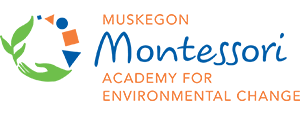The Montessori philosophy was established by Dr. Maria Montessori in 1907 when she opened her first classroom, the Casa dei Bambini, or Children’s House. The school was host to 60 young children from a slum district of Rome. From the beginning, Dr. Montessori taught the children with a conviction of development of initiative and self-reliance. She insisted the children teach themselves with the things that interest them most. Before the age of five the children learned to read and write, preferred work to play, and displayed sustained mental concentration without fatigue.
The success of the Children’s House sparked interest around the world. Its popularity led to the founding of other Montessori schools, and settled in the United States in 1911. As the movement progressed people were amazed by the “miracle children” who graduated from Montessori schools. Public figures such as Thomas Edison and Alexander Graham Bell were known as Montessori advocates. By 1916, more than 100 Montessori schools were operating in 22 states.
However, by 1925 the movement had faltered. As a result of World War I, travel limitations, language barriers, and anti-immigrant sentiments, the curriculum’s popularity began to decline.
As the Montessori movement weakened in the United States, it prospered elsewhere in the world. Dr. Montessori and her son, Mario Montessori, worked to lay a strong foundation for the Montessori philosophy. The pair traveled around the world teaching others and opening new schools. After her death in 1952, Mario Montessori took over his mother’s place as leader of the Montessori movement.
The Montessori philosophy had been forgotten in the United States, until Nancy McCormick Rambusch, a young American teacher, began looking for alternatives to traditional teaching methods. Her search took her to Paris, where she met Mario Montessori. Mario saw that she was well educated, charismatic, and a tireless advocate like his mother. He urged Rambusch to take the Montessori curriculum back to America and she enthusiastically accepted.
After several years of teaching out of her apartment, Rambusch opened the Whitby School in Greenwich, Conn. In 1960, Rambusch launched the American Montessori Society (AMS), the first — and still the largest — of several organizations supporting Montessori in America. Parents and educators turned to AMS for advise on how to start schools and teacher training programs of their own.
Today AMS is host to 1,200 affiliated schools, over 11,000 members, and close to 100 AMS affiliated teacher-training programs. AMS has made it a priority to extend Montessori education to greater numbers of children in the public sector. Today there are Montessori programs in more than 400 public schools, many of which are charter schools.
